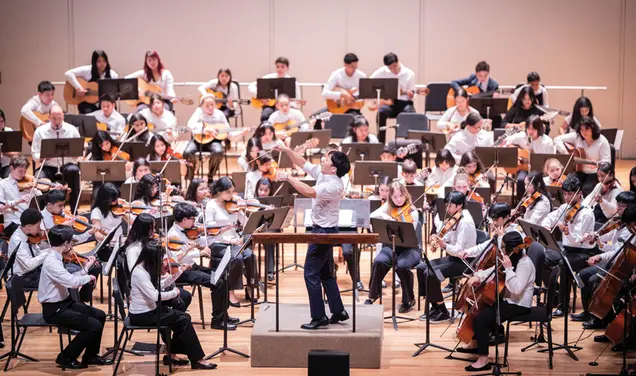Rally ’Round the Cannon: Picture This
‘What’s wrong with readin’ comic books? I don’t understand this kiddin’ about readin’ comic books. When I get through with ‘em the other players on our club borrow them from me. Nobody makes a fuss about that.” — Yogi Berra
It seems hardly credible that we’ve come across another December but, with the tiny consumers and gigantic corporations eagerly gearing up, the holidays and the year’s end come bearing down once again. Here in the History Corner that means a focus on a special (if not peculiar) gift for you, the Ardent Historian, as a sort of reward for your ardency through the year, and your good humor in jointly pursuing the lessons of the University’s unique history.
Speaking of tiny consumers, it’s time we took a lesson from the smallest and wiliest of those among us, perhaps your children if your class year falls in the 2000s or your grandchildren if it ends in the 1970s or whatever, those brilliant scholars of Harry Potter, Legos, and Minecraft. It’s a lesson that has been learned to great effect by the publishing industry, which has gratefully not gone belly up following the Internet’s ascendance but has certainly done some radical changing of its business models. And leading the charge have been children’s books, which continue to grow in quantity and (arguably, I suppose) quality in the face of successive multimedia onslaughts. Having recently done exhaustive research into the field with my crack research staff of 1- and 5-year-olds, let me hazard a couple guesses as to why.
First, children’s authors and illustrators have risen to the occasion with sorts and complexities of literary style that chart new courses graphically, while often returning to the seriousness of the most enduring children’s literature of the past. Think Grimm’s fairy tales or A Christmas Carol illustrated by Salvador Dali. The ability of even the youngest absorber of wisdom to not only grasp the subtleties of the printed page but to free-associate with other experiences within her ken is impressive (and sometimes jarring), and the ability to pause for such excurses is what sets the book apart from the cleverest video episode of Daniel Tiger ever produced. (Although his orange-and-black color scheme and fondness for mom’s banana swirl are exemplary.) And as a second educated guess, let us return to the truism of truisms: A picture is worth 1,000 words.
It was in mulling this about that my 2023 holiday gift for you popped to mind, one which can both be fun for you and illuminating to the non-Princetonian acquaintances (I hesitate to say “friends”) of your vast experience. It comes in two parts, separate but intriguingly intertwined, and in the great tradition of historians everywhere, we’ll examine them backwards. It’s something about antecedents or first causes or the archaeological process or something, but trust me, I didn’t start it. Anyhow, we begin in 1996.
The University’s Bicenquinquagenary celebration (oh, no! my spellcheck just died!) involved, naturally enough, a long and multifaceted look back at the long and multifaceted prior 250 years, predating the country, the Dinky, paved streets, and even Hoagie Haven; almost any vestige of civilization as we now conceive it. It did, however, embrace many hallmarks of tradition developed along the way. The Charter Day Convocation on the front campus could have been visually mistaken for its predecessors in 1946 and 1896, as designed by that indefatigable busybody Andrew Fleming West 1874 and his collegiate pomp cronies, with delegates from across the globe parading in their academic regalia to remind attendees how insignificant those attendees were. It did fortunately provide a suitable frame for Professor Toni Morrison’s inspiring address, “The Place of the Idea, The Idea of the Place,” one of the four great speeches on the topic of Princeton’s existence and aspirations. The BCQ celebration also provided a ready excuse for a new authorized history of the University — which after 250 years was no idle concept — in this case The Making of Princeton University by eminent non-Princeton historian James Axtell, a solid 600-page examination of the 20th century, as the former College of New Jersey reinvented itself as a university, then proceeded to establish a unique role among the world’s preeminent colleges. It was able to focus on that period alone in deference to its direct predecessor commissioned for the Bicentennial in 1946, a masterwork by Princeton historian Thomas J. Wertenbaker pointedly labeled Princeton: 1746-1896, which in 400 pages seems able to convey the purpose and even the smell of the college in its developmental stages across that perilous time, soldiering through religious fashion, revolution, trustees appointed for life, inept administrators, outhouse fires, Civil War, New Jersey winters and mosquitos, and the invention of football.
But since you’re not about to read 1,000 pages of history over your enhanced eggnog, that’s not your present this year. Instead, it’s high time we consider the wisdom of the best children’s books and, not least, of sage Yogi Berra, and examine the singular hidden treasure of the BCQ, Don Oberdorfer ’52 and J.T. Miller ’70’s Princeton University: The First 250 Years. At 270 gorgeous color pages, you STEM types have already figured this equates to a 73% reduction in page turning, not to mention the pointed inclusion of items and events that are more colorful than monumental. Example: A photo of the asteroid Princetonia, discovered in 1903 by Professor Raymond Dugan. Example: A lovely photo of Brood X cicada shells gracing the ivy on the front campus. Example: a photo of all six proctors in 1949, the entire campus security force, striding down Blair steps with their sole weapons: their fedoras. The ability of this highly deceptive volume — it’s in a coffee-table size, but its format gleefully mixes its 500 or so arresting graphics with razor-sharp text on virtually every page — to instruct is huge, its choices of topical emphasis and guiding of the eye are a mini-lesson in the very best of spoonful-of-sugar-helps-the-medicine-go-down children’s literature.
The late Don Oberdorfer was a very serious guy, one of the preeminent newspaper foreign affairs reporters of the century, whose global perspective started by pairing an SPIA major with the editorship of The Daily Princetonian, and grew into an imposing interpretive ability that graced The Washington Post for 25 years. His broad and deep view of global reality and his obvious adoration of Princeton — he did a few stints as a visiting Ferris journalism professor — combine as a crystal-clear foundation for the fun supplied by J.T. Miller’s 14-chapter visual Tigerfest. (In fact, the two-page spread on The Princeton Tiger alone contains images of eight separate tigers.) He’s a keen global photographer whose various research projects for the University taught him where the visual history was buried within the Archives and without, and whose ability to sift its images to complement and reinforce Oberdorfer’s understanding of the University approaches the magical.
But wait, there’s more!
One might readily infer from this entertaining opus that half of the Princeton of 1996 was created in the prior 50 years, which take up almost precisely half the volume, with the other half the 200 years prior. As a recognition of the changes undertaken under Bob Goheen ’40*48, that seems even more the case now than then. But for those who feel that 130 pages and a couple hundred pictures don’t do the first 200 years justice, we have yet another gift: the most worthy predecessor of the Oberdorfer/Miller book, published for the bicentennial in 1947, forthrightly called Pictorial History of Princeton, edited by writer/professor Wheaton J. Lane 1925 *35. Although necessarily in black and white, it embarks on a then-unprecedented visual evocation of what the place is about, unearthing rarely seen images of people and events sprinkled across the centuries; in this case 75% of the 200 pages ends up devoted to the immediate 50 years stretching back to West, Woodrow Wilson 1879, and the festivities of 1896. Lane, after teaching and decades of history writing, dug up materials from dissociated troves (the Archives didn’t yet exist; there is an intriguing allusion in the acknowledgements to the “Treasure Room” in the library) and created an adventure tale of clubs, spires, and academics — all pictured — which by well-planned good fortune culminate in the triumphant … bare, bulldozed expanse awaiting the excavation of the new Firestone Library. Over 50 years later, Axtell would point to Firestone as the enduring symbol of the University’s identity, singularity, and import, implicitly elevating Lane and his creative vision.
Thus our gift to you and those Princeton-besotted folk on your list: almost 1,000 graphic images of the University’s history in two wonderful (if not miraculous) volumes, which you can go online and dig up in versions fancy or modest:
Pictorial History of Princeton, Wheaton J. Lane ed., Princeton University Press 1947
Princeton: The First 250 Years, Don Oberdorfer and J.T. Miller, Princeton University 1995
Amid the toddy-fueled visual enjoyment, just do one small thing for me. Consider the thousands of people who created the unique mini-world you see portrayed, the Princeton of you and your friends. Consider the gift we each have been given.
God bless us, every one.










No responses yet